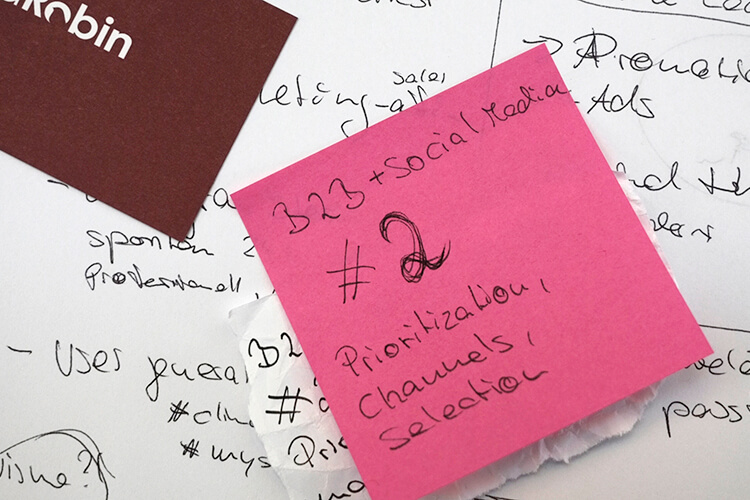In the first part of our series, we took a look at Xing and LinkedIn - the classic B2B channels in social media. So, the homework is done. Now, we are off to the hip channels like Instagram, Snap Chat, TikTok, Youtube and Co?
Just hold your horses for a moment.
First, let us take a deep breath, relax and think about a couple of questions:
- Who do we want to reach?
- What are we aiming to achieve?
- How many resources (internal and external) are at our disposal for this purpose?
Who do we want to reach?
There might be some B2B campaign that target young to very young consumers. However, I personally have not yet come across a B2B company where this target group has such a high priority that significant budget and (wo)manpower were allocated. Therefore, let's forget about Snap Chat and TikTok.
What are we aiming to achieve?
Big channels like Facebook, Instagram and Youtube are suitable for building and maintaining a brand. Values such as credibility, quality, responsibility and transparency can be communicated to a broad audience and can enhance your brand in the long term. Direct lead generation or online purchases can also be objectives, but keep in mind: promotion-based content should be the exception rather than the rule.
How many resources are at our disposal for this purpose?
Now comes the showstopper: As much as I enjoy breaking new ground with our B2B customers, I often pull the plug on social media cravings at an early stage. The competition in the Social Web is enormous and the battle for the attention of relevant target groups is highly professionalized.
Let us have a look at the expectations of today’s social media users when interacting with brands on the social web. That will give us an estimate of the effort required for a successful appearance with one of the major social networks.
What users expect of brands on Social Webs:
- Uniform design and visual language (also applies to videos)
- Relevant, unique and interesting topics (Facebook is not a channel for secondary use of press releases!)
- Frequent communication (at least two to four postings per month are expected of B2B brands, depending on the channel)
- Quick response to questions and suggestions from followers (depending on the industry, rule of thumb: within 24 hours)
- Authenticity and personality (company speakers and values proposed need to be credible, ... a big issue!)
What kind of resources are required?
- Who within your company has the skills to meet all these expectations and to coordinate internal speakers and external service providers?
- Does your colleague also have the time to do this as well as a back-up when on vacation or sick (budget a minimum of eight hours per week for concept development, editorial planning and implementation)?
- How much budget do you have for external service providers (e.g. consultants, copywriters, graphic designers, photographers, video and sound professionals)?
My tip: Rather than spending a little on all channels, focus on the channel that best fits your topics and your target group, first. If that works well, you can start expanding.
Conclusion: Communicating on social media channels like Instagram, Facebook and YouTube can strengthen your B2B brand. But it is better to be really good on one channel than mediocre to lousy on all of them as it might potentially damage your brand.
The next Cheat Sheet will take a more detailed look at the advantages and disadvantages of the individual social media channels Facebook, Instagram and Youtube.


